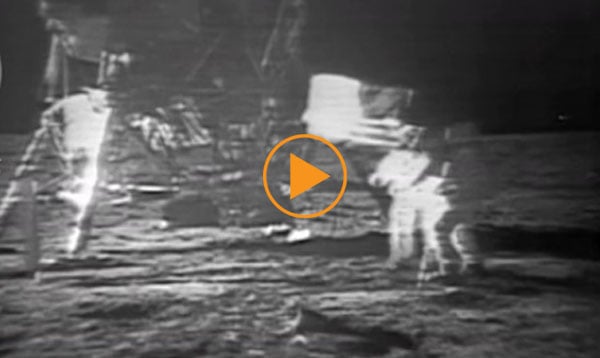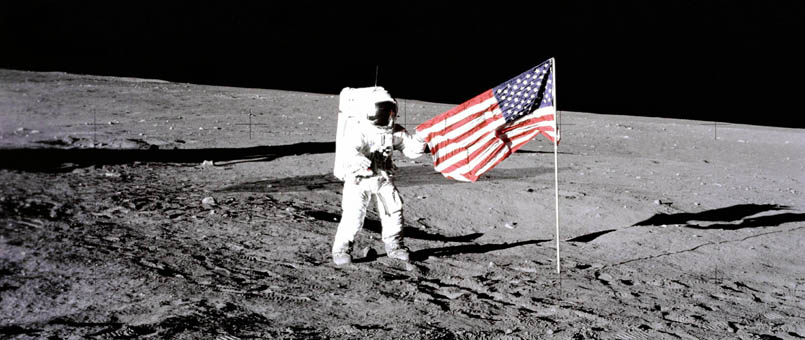
Astronauts Vs. Cosmonauts: The Great Space Race
Archival footage captures the head-to-head battle between America’s astronauts and the Soviet Union’s cosmonauts to be the first to land a man on the moon.
Get in the know about this legendary scientific competition ahead of the upcoming 60 year anniversary of the establishment of the National Aeronautics and Space Administration (NASA) on the 1st of October 2018.
Lasting 17 years, from 1955-1972, the epic Space Race was a competition fought in the name of supremacy in spaceflight capability. It involved two Cold War rivals: the United States and the Soviet Union, following a missile-based arms race after WWII.
Technological superiority was believed to be crucial for national security, and symbolic of ideological dominance. The contest initiated pioneering attempts to launch a range of unmanned probes, artificial satellites and even manned aircraft into space, with the ultimate goal of seeing man successfully complete a lunar landing.
In celebration of the 60th anniversary of the beginning of the great Space Race on 2 August, journey along its timeline by exploring footage in the Bridgeman archive.
1955
- 2 Aug – The Space Race begins with the US announcement of the intended launch of artificial satellies for the International Geophysical Year. Four days later the Soviet Union responded by declaring that they too would soon launch a satellite.

First Soviet cosmonauts undergo training and medical testing in laboratories, USSR 1950s / Film Images / Bridgeman Footage
Footage in the Bridgeman archive reveals the training of the first Soviet cosmonauts, which involved gravitation tests, medical examinations, mental rapidity exercises and balance tests. This preparation would be crucial for the USSR to meet its ambitious goals in the Space Race challenge.
1957
- 4 Oct – USSR launches Sputnik 1, thus beating the US to be the first to orbit a satellite. It will be the 60 year anniversary of the launch in 2017.
- 3 Nov – USSR launches Sputnik 2 with a small dog called Laika.
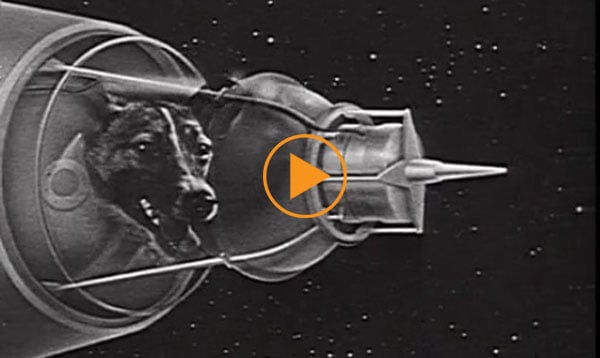
Gagarin talks to camera about Sputnik 1 and Sputnik 2 (animation featuring the space dog Laika) / Film Images / Bridgeman Footage
The surprise success of Sputnik 1, a satellite made up of a polished metal sphere with four radio antennas, led to the US Sputnik crisis and catalysed the Space Race.
The aim of the experiment with Sputnik 2 was to prove that a living passenger could survive being launched into orbit. It led the way for manned space travel by giving scientists some of the first data on how living creatures handle spaceflight environments. In this particular instance it was unsuccessful, as Laika died within hours of the launch, possibly from overheating or lack of oxygen.
1958
- 31 Jan – US launches Explorer 1, the first American satellite to reach orbit.
- 12 Sep – Soviet space probe Luna 2 is the first to reach the moon.
- 1 Oct – US forms The National Aeronautics and Space Administration (NASA). The year 2018 marks NASA’s 60 year anniversary.
1959
- 2 Apr – The ‘Mercury Seven’ astronauts are selected by NASA
The Mercury Seven, also known as Astronaut Group 1, were US astronauts selected for Project Mercury: an experiment to determine whether humans could survive space travel. The original astronauts included Alan Shepard, Gus Grissom, John Glenn, Scott Carpenter, Wally Schirra, Gordon Cooper, and Deke Slayton.
1960
- 1 Apr – The first weather satellite, Tiros 1, is successfully launched by the US.
- 19 Aug – Soviet dogs Belka and Strelka spend a day in space.

Soviet space dogs Belka and Strelka go into space in the Vostok-1K No. 2 satellite, August 19th 1960 / Film Images / Bridgeman Footage
The dogs were accompanied by 42 mice, 2 rats, a rabbit, flies and a number of plants and fungi. All returned home to Earth safe and sound, with Belka and Strelka achieving international stardom. One of Strelka’s six puppies even went on to form a romance with one of John F. Kennedy’s dogs.
1961
- 12 Apr – Yuri Gagarin becomes the first man in space.

Left: Yuri Gagarin becomes 1st man in space, April 12th 1961. Public announcement and Gagarin’s face and voice from space are broadcast on radio and TV / Film Images
Right: Yuri Gagarin puts on spacesuit and boards the Vostok 1 for the launch of the first rocket into outer space. 12th April 1969 / Film Images
Yuri Gagarin was chosen along with 19 other pilots for the Soviet space program in 1960. He was then further selected for an elite training group from which the first cosmonauts of the Vostok programme would be chosen. Gagarin returned from his triumphant mission on Vostok 1 as an international celebrity and Hero of the Soviet Union.
- 5 May – Alan B. Shepard becomes the first American in space.
- 25 May – President John F. Kennedy challenges the nation to land a man on the Moon and return him safely to Earth before the end of the decade. Sadly he was assassinated just two years later on 22 November, but his ambitions of space travel lived on through the Kennedy Space Centre.
1963
- 16 Jun – Cosmonaut Valentina Tereshkova becomes the first woman in space.
1965
- 18 Mar – Cosmonaut Alexei Leonov performs the first spacewalk, spending 12 minutes outside of his Voskhod spacecraft.
- 3 June – Ed White performs America’s first spacewalk.
1968
- 27 Mar – Yuri Gagarin dies in a plane crash.

Left: Yuri Gagarin Visits Manchester, 12th July 1961 / North West Film Archive at Manchester Metropolitan University / Bridgeman Footage
Right: Funeral of Yuri Gagarin, Soviet cosmonaut, and Vladimir Seregin who died in the same air crash. Moscow, 1968 / Film Images / Bridgeman Footage
Above is a clip of Gagarin’s visit to the Amalgamated Union of Foundry Workers, where he is presented with a medal by the Union President. He talks to journalists about his hopes for the future of space exploration, exactly three months after he made his historic space flight.
Gagarin’s sudden death seven years later occurred during a routine training flight from Chkalovsky Air Base that crashed unexpectedly. The bodies of Gagarin and flight instructor Seryogin were cremated, with the ashes buried in the walls of the Kremlin on Moscow’s Red Square.
Several other astronauts had fatal accidents from automobile and plane crashes during the Space Race, including Edward Givens, Clifford Williams, Charles Bassett, Elliott See and Theodore Freeman.
1969
- 20 July – Neil Armstrong and Edward ‘Buzz’ Aldrin become the first men to walk on the Moon.
The pinnacle moment of the epic Space Race took place in 1969 when US astronauts Armstrong, Aldrin and Michael Collins successfully manned an Apollo 11 spacecraft to the moon.
Broadcast on live TV to a world-wide audience, Armstrong stepped onto the lunar surface and described the event with the famous words, ‘one small step for man, one giant leap for mankind’. The Space Race effectively ended then, with the fulfilment of a national goal declared by President Kennedy in 1961.
1970
- 11 Apr – Apollo 13 fails mission: ‘Houston, we’ve got a problem’.
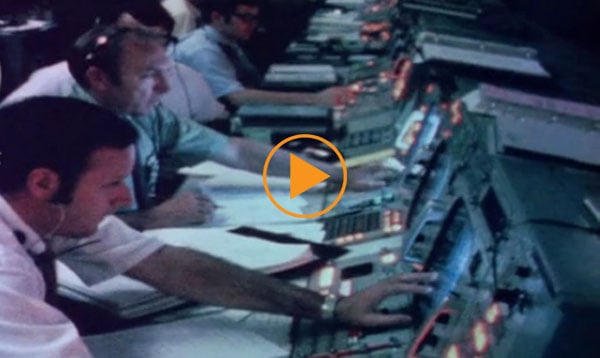
Houston We’ve Got a Problem, part 2 – launch of Apollo 13 shuttle, crew report problem, reaction in Mission Control, news bulletin / Bridgeman Footage
Apollo 13 was the seventh manned mission in the US Apollo space program and the third intended to achieve a lunar landing. The mission was aborted after an oxygen tank exploded two days after the craft set off, causing limited power, shortage of water and loss of cabin heat. Thankfully, the 3-man crew returned safely to Earth on 17 April.
This clip was taken from a 1974 documentary called ‘Houston We’ve Got a Problem’, chronicling the failed moon landing and the famously understated declaration of an emergency to Mission control.
1972
- Apr – Space Race concludes with the agreement on a co-operative Apollo-Soyuz Test Project, which results in the July 1975 rendezvous in Earth orbit of a Soviet cosmonaut crew with a US astronaut crew.
- 7 Dec – Apollo 17, the final mission of the United States’ Apollo programme, launches.
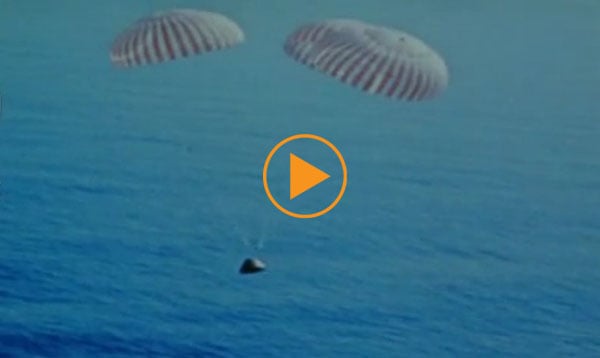
Time of Apollo, part 4 – Apollo 17 mission. Cernan and Schmitt sing on the moon and plant the US flag, lunar module landing in sea / Bridgeman Footage
Apollo 17 remains the most recent manned Moon landing and also the last time that humans have travelled beyond low Earth orbit. In this footage taken from a 1975 documentary about NASA’s Apollo programme, we see astronauts Eugene Cernan and Harrison Schmitt singing and taking photos as they plant the US flag on the moon. It also features footage of a lunar module parachuting down into the sea.
Legacy
The Space Race has left an extensive legacy of Earth, weather and communications satellites, and continuing human space presence on the International Space Station. It also sparked growth in spending on education and research and development, which contributed to other beneficial technologies.
Sources
Mark Wade. ‘Apollo 17’. Encyclopedia Astronautica. Retrieved 24 July 2015.
Richard Stenger. ‘Man on the Moon: Kennedy speech ignited the dream’. CNN. Retrieved 24 July 2015.
‘The Space Race‘. History. Retrieved 24 July 2015.
‘Timeline of Space Exploration‘. The Space Race. Retrieved 23 July 2015.
Save
Save
Save


